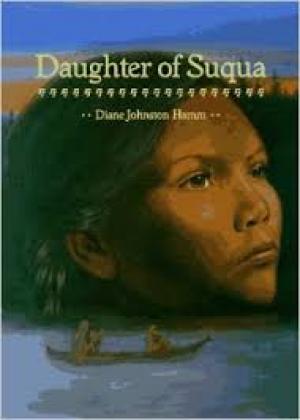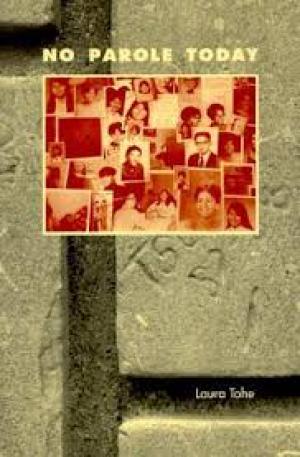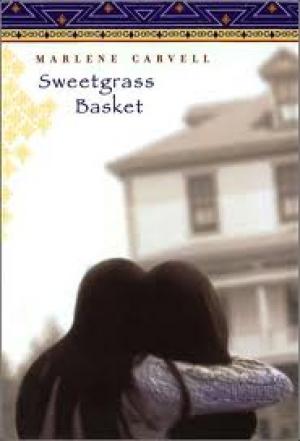Native Residential Schools: Books for Middle Grades and Young Adults

These novels and memoirs tell the stories of Indian residential schools based on the perspectives of the children and youth who remember them. From the final moments at home to the bonds forged with siblings and peers far away from family, these selections speak to the painful challenges and life-changing experiences of the students who persevered. Titles for younger readers are available on our related children's booklist.
Other Resources
Find more American Indian/Alaska Native (AIAN) titles through:
- Colorín Colorado's AIAN Booklists and Book Finder
- American Indian Youth Literature Award
- Indigenous Reads Rising (We Need Diverse Books)
- Native Children's and Young Adult Books and Resources (Cynthia Leitich Smith)
- American Indians in Children's Literature (Dr. Debbie Reese)
Daughter of Suqua
"It is 1905, and Ida, 10, lives with her parents and grandmother among their people, the Suquamish, on an island off the coast of Washington. The story revolves around their struggle to maintain their identity; first as a family, and second as a tribe when the U.S. government resettles them on allotted lands and enrolls their children in 'American' schools. Readers will identify with Ida's need to be with her friends and family and her despair over being sent away to a white boarding school.
As Long as the Rivers Flow
Loyie shares a quiet but powerful first-person account of his last summer before he and his siblings were taken away from their family. Most of the story focuses on what was otherwise a normal seasonal routine for the Cree people of that era, with the family moving from their main cabin to their summer "camp" for a few weeks…When the children learn that they must go to the residential school or their parents will be imprisoned, and they are physically loaded onto the back of a truck by strangers, the sense of separation and loss is keenly felt. — School Library Journal
Fatty Legs: A True Story
At the age of eight, Margaret Pokiak (Inuvialuit) set her sights on learning to read — even though it meant leaving her Arctic village. Upon her arrival at school, Margaret encountered the Raven, a black-cloaked nun who immediately disliked the plucky girl and frequently humiliated her. In spite of the Raven's cruelty, however Margaret refused to be intimidated and gave the nun a lesson in the power of human dignity. Complemented by archival photos, this inspiring first-person account of a girl's determination to confront her tormentor will linger with young readers.
Goodbye Buffalo Bay
The sequel to As Long as the Rivers Flow and When the Spirits Dance is set during the author's teenaged years. In his last year in residential school, Lawrence learns the power of friendship and finds the courage to stand up for his beliefs. He returns home to find the traditional First Nations life he loved is over. He feels like a stranger to his family until his grandfather's gentle guidance helps him find his way, discovering a new sense of freedom and self-esteem.
My Name Is Not Easy
"Luke's Iñupiaq experience of leaving his home near the Arctic Circle in 1960 to journey with his two younger brothers to the Catholic sponsored Sacred Heart School is based in large part on Edwardson's husband's memories of boarding school…Nothing is familiar to Luke and his fellow students; the terrain, the food, the language are strange, and their struggle with feelings of homesickness and alienation is heart-wrenching.
My Name Is Seepeetza
Her Salish name is Seepeetza, but at the Indian residential school in British Columbia, she is called Martha. She hates her white name, but she is beaten if she talks "Indian." Her long hair is cut off. At the same time, the other students pick on her because she has green eyes and looks white…First published in 1992 in Canada, where it won the Sheila A. Egoff Children's Book Prize, this autobiographical novel is written in the form of Seepeetza's diary in her sixth-grade year in the 1950s. — Booklist
No Parole Today
This first collection, in prose memoir and poetry, of the work of Diné (Navajo) poet and teacher Laura Tohe describes attending a government school for Indian children and the challenge it presented to her socially, culturally, and expressively.
Pipestone: My Life in an Indian Boarding School
Product Description: Best known as a leader of the Indian takeover of Alcatraz Island in 1969, Adam Fortunate Eagle (Ojibwe) now offers an unforgettable memoir of his years as a young student at Pipestone Indian Boarding School in Minnesota. In this rare firsthand account, Fortunate Eagle lives up to his reputation as a “contrary warrior†by disproving the popular view of Indian boarding schools as bleak and prisonlike. Along the way, he shares anecdotes of dormitory culture, student pranks, and warrior games.
Sweetgrass Basket
Mattie and Sarah are two Mohawk sisters who are sent to an off-reservation school after the death of their mother. Subject to intimidation and corporal punishment, with little hope of contact with their father, the girls are taught menial tasks to prepare them for life as domestics. How Mattie and Sarah protect their culture, memories of their family life, and their love for each other makes for a powerful, unforgettable historical novel.
The Indian School on Magnolia Avenue: Voices and Images from Sherman Institute
Product Description: In 1902, the federal government opened Sherman Institute in Riverside, California, to transform American Indian students into productive farmers, carpenters, homemakers, nurses, cooks, and seamstresses. Contributors to The Indian School on Magnolia Avenue have drawn on documents held at the Sherman Indian Museum to explore topics such as the building of Sherman, the school's Mission architecture, the nursing program, the Special Five-Year Diné (Navajo) Program, the Sherman cemetery, and a photo essay depicting life at the school.
The Middle Five: Indian Schoolboys of the Omaha Tribe
Product Description: The Middle Five, first published in 1900, is an account of Francis La Flesche's life as a student in a Presbyterian mission school in northeastern Nebraska about the time of the Civil War.
They Called It Prairie Light: The Story of Chilocco Indian School
Product Description: Established in 1884 and operative for nearly a century, the Chilocco Indian School in Oklahoma was one of a series of off-reservation boarding schools intended to assimilate American Indian children into mainstream American life. Lomawaima allows the Chilocco students to speak for themselves.
Toronto at Dreamer's Rock & Education is Our Right (Two One-Act Plays)
Product Description: In these two plays, Drew Hayden Taylor delves into the past and speculates about the future as he examines the dilemmas facing young Native Canadians. "Toronto at Dreamer's Rock" is a moving portrayal of a teenage boy who is torn between the traditions of his people, which he only vaguely understands, and the lure of modern life.
Multicultural Literature
See more great related resources and videos in our Multicultural Literature section!
















